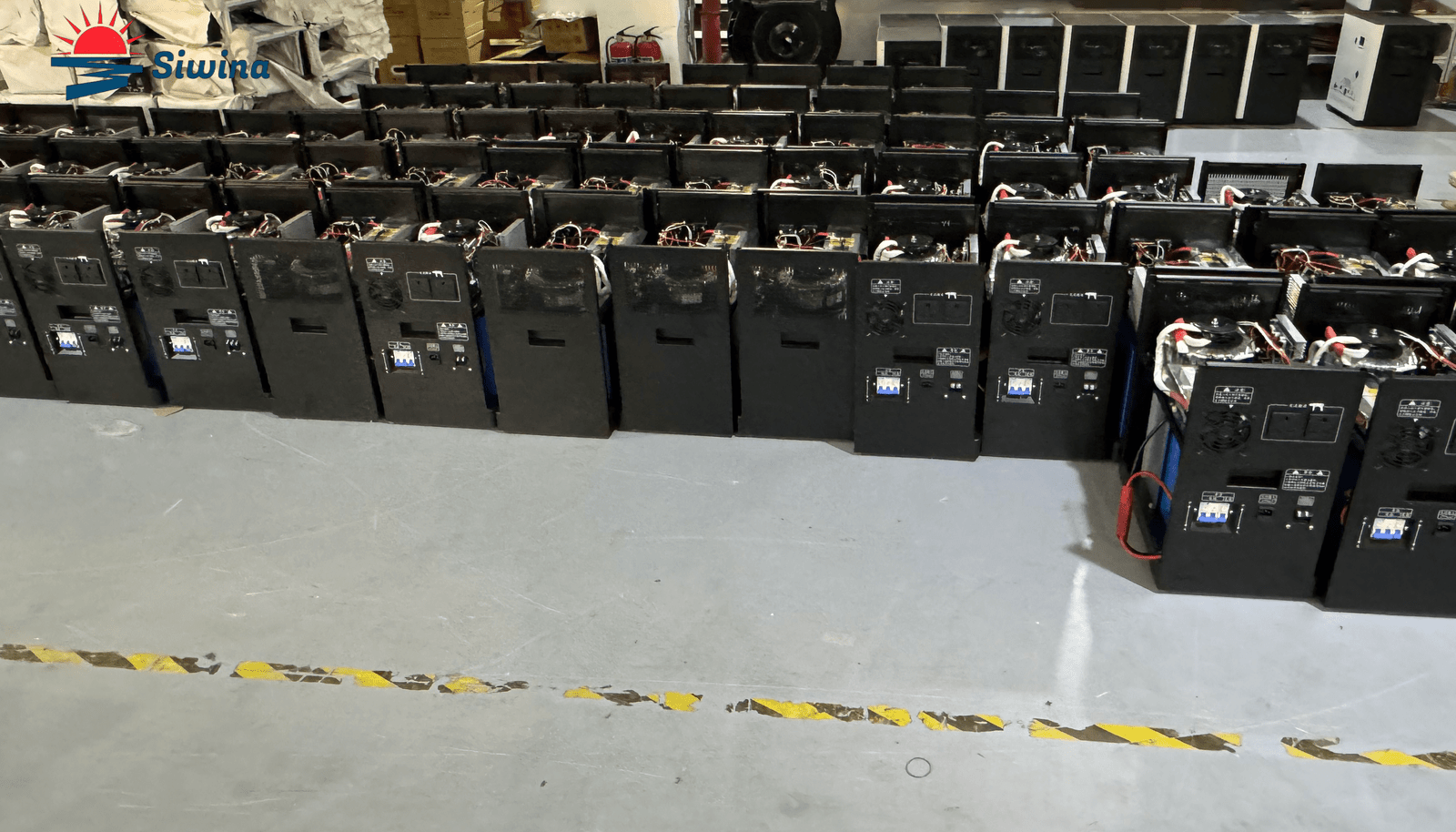What problems does our portable all-in-one solar generator solve for herders?
Application Cases:
The Qinghai-Tibet region, marked by its remote environments and rugged landscapes, presents unique challenges for its inhabitants, particularly the herders who rely heavily on fresh milk. The preservation of milk in such a harsh climate, coupled with an often unreliable electricity supply, has long posed a significant obstacle. These natural and infrastructural constraints not only jeopardize the quality of milk available for consumption but also hamper its saleability, directly impacting the herders’ livelihood.
Milk, being a perishable commodity, necessitates effective refrigeration to maintain its freshness and nutritional value. This is even more critical in the Qinghai-Tibet region, where alternative preservation methods are either impractical or inefficient. The absence of consistent and reliable electricity further exacerbates this issue, rendering conventional refrigeration solutions unfeasible. In light of these challenges, there emerged an urgent need for an innovative and sustainable solution that could ensure the high-quality preservation of milk over extended periods.
To address these critical challenges, we have introduced a 3kW 24VDC portable all-in-one solar generator, specially designed to power milk refrigeration equipment. This cutting-edge solution leverages the abundant solar energy available in the region, providing a stable and eco-friendly power source. By harnessing solar power, this generator offers a reliable and sustainable means of maintaining the quality and safety of milk, consequently extending its shelf life.
Through this initiative, we aim to enhance the herders’ ability to preserve and market their milk effectively, thereby improving both their quality of life and economic prospects. This case study delves into the intricacies of the solar-powered refrigeration system, exploring its implementation, benefits, and broader implications for herder communities in the Qinghai-Tibet region.
What Problems Can Solve by Our All-In-One Solar Generator?
Traditional refrigeration systems frequently pose significant challenges for remote areas, including the Qinghai-Tibet region. These systems often depend on complex installations and require external chillers, making them unsuitable for isolated communities. The necessity for extensive technical support further complicates their usability in these locations, where access to such services is limited or entirely unavailable.
Our 3kW 24VDC portable solar generator offers a highly effective solution tailored to these specific needs. The system is designed with simplicity and efficiency at its core, ensuring it can be operated with minimal technical expertise. This ease of use is crucial for herders in remote regions, eliminating the reliance on external technical assistance and thereby overcoming a significant operational hurdle.
The portable nature of our solar generator allows for flexibility and mobility, essential for herders who frequently move across vast terrains. Unlike traditional systems that are stationary and require a consistent electricity supply, our solar-powered solution harnesses renewable energy from the sun, providing consistent and reliable refrigeration for fresh milk. This ensures the high quality and longevity of the milk, preserving it effectively until it reaches the market or processing facilities.
Moreover, the efficiency of the 3kW 24VDC system aids in reducing energy losses, optimizing power usage to maintain the desired cooling temperatures rigorously. This efficiency is particularly beneficial in the Qinghai-Tibet region, where weather conditions can be harsh and unpredictable. By utilizing solar energy, herders also mitigate the environmental impact, promoting a sustainable approach to milk refrigeration that aligns with contemporary ecological standards.
Ultimately, our solar-powered refrigeration system provides a user-friendly, reliable, and environmentally-conscious solution to the logistical and operational challenges faced by herders in the Qinghai-Tibet region. Its innovative design ensures that fresh milk is preserved seamlessly, supporting the livelihoods of herding communities and contributing to the overall sustainability of the dairy industry in these remote areas.
Technical Specifications
The solar-powered refrigeration system designed for herders in the Qinghai-Tibet region integrates several sophisticated components to ensure efficient and reliable operation. At its core, the system employs a 3kW 24VDC 220VAC low-frequency pure sine wave inverter. This inverter is crucial for converting the direct current (DC) from solar panels into alternating current (AC) required by most refrigeration units. Its low-frequency pure sine wave output guarantees stable and reliable power, reducing the risk of damage to sensitive electronic components and extending the overall lifespan of the refrigeration system.
Complementing the inverter is a 24V 60A MPPT solar controller. This maximum power point tracking (MPPT) controller is instrumental in optimizing the energy harvest from the solar panels. By constantly adjusting the electrical operating point of the modules, it ensures that the system operates at its peak efficiency, regardless of the varying sunlight conditions typical of the region. The 60A capacity ensures a robust flow of power, enabling the storage and utilization of significant amounts of energy.
Energy storage is addressed with a high-capacity 25.6V 100Ah LiFePO4 battery. Known for its stability and longevity, the lithium iron phosphate (LiFePO4) battery offers a reliable solution for energy storage. Its high energy density ensures that sufficient power is stored during the day to maintain continuous refrigeration throughout the night and during periods of inclement weather. This battery type is also noted for its enhanced safety features, including thermal stability and a longer cycle life compared to traditional lead-acid batteries.
Collectively, these components form a robust solar-powered system capable of maintaining uninterrupted operation. The synergy between the inverter, solar controller, and battery ensures that the herders in the Qinghai-Tibet region can rely on consistent refrigeration, crucial for preserving their milk and enhancing their livelihood. This integration of advanced technologies serves to mitigate the challenges posed by the harsh and variable climatic conditions of the area, leading to a sustainable and effective solution for the herders.
Conclusion
The 3kW 24VDC portable solar generator emerges as a groundbreaking solution to the milk preservation challenges faced by herders in the Qinghai-Tibet region. By harnessing solar energy, this innovative system ensures a consistent, reliable power supply that is indispensable for running refrigeration units. The seamless integration of easy operation and intelligent temperature control not only safeguards the quality and safety of fresh milk but also extends its shelf life, thereby directly addressing one of the primary concerns of herders.
Beyond the immediate benefits of maintaining milk quality, this solution highlights the profound impact of renewable energy technology in solving practical, real-world problems in remote areas. By reducing reliance on conventional fuel sources, the system not only promotes environmental sustainability but also provides a cost-effective and efficient means for improving the livelihood of herders. With minimal operational complexity and maintenance, the solar generator represents a significant advancement in empowering communities with sustainable technology.
This case study serves as a compelling example of the broader implications of solar energy. The improvements in herders’ productivity and product preservation underscore the potential of renewable energy systems to foster economic development in rural settings. Furthermore, the application of this technology exemplifies how innovative engineering can contribute to global sustainability goals, reducing carbon footprints, and enhancing the quality of life for underserved populations. Thus, the deployment of solar-powered milk refrigeration offers a model for future initiatives aimed at integrating renewable energy solutions in diverse sectors and regions.
In conclusion, the successful implementation of the 3kW 24VDC portable solar generator in the Qinghai-Tibet region stands as a testament to the transformative power of renewable energy. It highlights the critical role that sustainable practices can play in addressing both contemporary challenges and long-term environmental goals. Such advancements are pivotal in promoting a more sustainable and equitable future for all.

